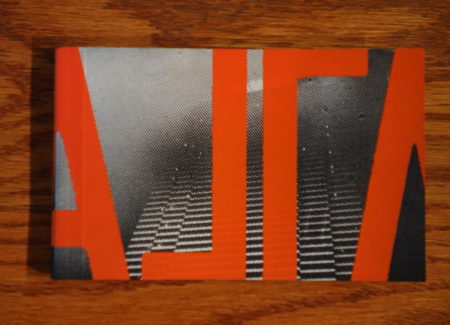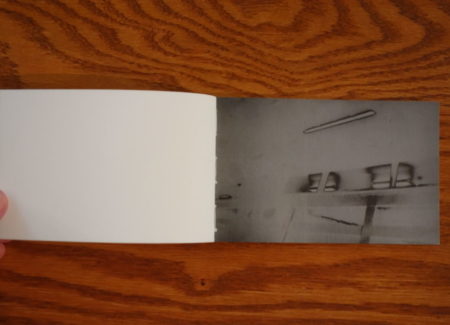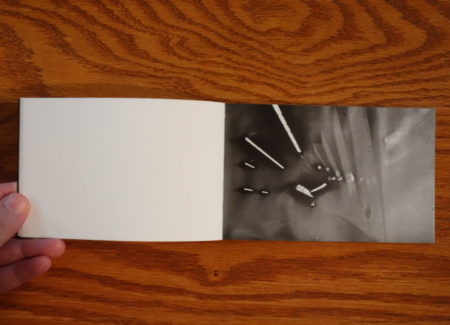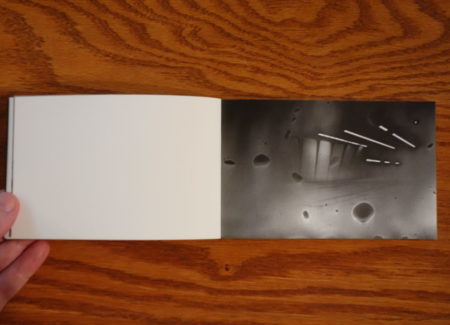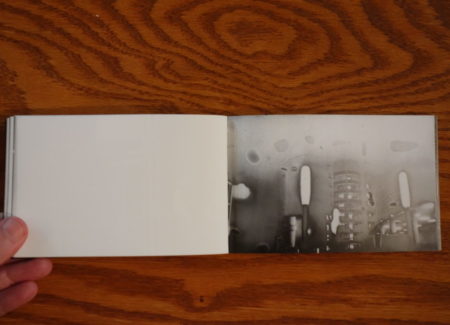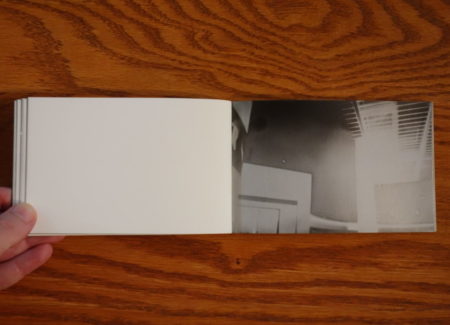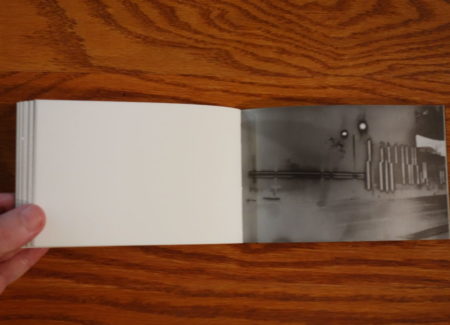JTF (just the facts): Published in 2016 by Kominek Books (here). Softcover, 96 pages, with 45 black and white reproductions (duotone printed deep black on silver ink). There are no texts or essays, aside from a short background paragraph by the artist. In an edition of 250. (Cover and spread shots below.)
A hardcover special edition is also available, in an edition of 100 (here).
Comments/Context: When we think of the glitz and glam cities of Los Angeles and Las Vegas, we typically picture their distinctive features, from palm trees and sandy beaches to neon-lit casinos and shimmering desert heat. But when the British photographer Antony Cairns visited these quintessentially American places, he saw something fundamentally different than the overly obvious surface details most would see. In process-heavy photographs that drastically reduce the legibility of these locations, he has stripped these two cities down to nearly unrecognizable ghosts of architectural edges and glimmers of bright lights. His pictures seem to document a kind of nocturnal essence, a common strain of futuristic modernity that lingers in the dark in urban areas the world over.
The lyrical connection to night is perhaps a misnomer, as it’s the unique processing of Cairns’ photographs that creates the enveloping darkness of his artistic vision, not the underlying scenes themselves. Starting with regular black and white film, he reverse processes his compositions to create black and white negatives, which he then improvisationally solarizes, bleaches, and washes with a variety of chemical treatments. Cairns then prints the final images on aluminum, giving them a metallic sheen, which is recreated in book form with silver ink.
Cairns perfected these elaborate processing techniques in a series of previous projects documenting his hometown of London (or LDN in his reduced letter titling), and so LA-LV can in many ways be seen as a continuation of that experimental progression, as applied in a new locale. If we look hard, we can see what appear to be skyscrapers, parking garages, tunnels, nightclubs, plazas, pedestrian walkways, and other fragments of public architecture, but it takes some effort – Cairns has transformed them so fully that they cease to represent someplace specific and become almost ambient, like fuzzily seen memories that remain elusively out of reach.
Both Los Angeles and Las Vegas have been the setting of memorable hard-boiled noir, so it’s tempting to slot Cairns’ imagery in as a contemporary version of that 1940s/1950s aesthetic. But his slashing lines of light, sleekly curved buildings, and intense geometric patterns feel more reminiscent of the abstracted tropes of science fiction, where dystopian outcomes and totalitarian menace seem to be part of the underlying atmosphere. And others might see a faint connection to postwar Japanese photography, and the gritty processing of the are-bure-boke aesthetic.
Regardless of which aristic framework might feel most relevant, Cairns’ photographs clearly traffic in deliberate stylized truncation, where architecture is slimmed down to expressionistic surfaces via a series of overt modifications and moderations. Bright lights turn into white blisters and burn marks, droplets and blobs interrupt recognizable scenes, and washes create sweeping gradations of tonality that mute or enhance certain portions of the compositions. In each case, the underlying patterns and highlights are balanced by the surface action, running from a blurred rainy window effect to eerie solarized inversions that shift and shimmer, with flares and aftereffects that mimic misty fogs and visual echoes.
The diminutive size of this photobook gives the pictures inside a flavor of the secret or the illicit, like a contrarian side of these famous cities we weren’t supposed to see – a spread palm will hold this book easily, or you can pocket it if someone gets too close. And while the impact of Cairns’ vision does get dulled a bit in flipping murky image after murky image, the overall feeling of the photobook is compellingly unique. In Cairns’ world, sun-baked optimism has given way to ominous nightmares, where the details we hold onto have been softened and silenced and the cityscapes we recognize have been revealed as imposters. If you thought LA-LV would offer up the comfortable fantasies of the Hollywood sign and the blackjack tables, think again.
Collector’s POV: Antony Cairns is represented by Roman Road in London (here) and Stieglitz 19 in Antwerp (here). His work has little secondary market history at this point, so gallery retail likely remains the best option for those collectors interested in following up.
